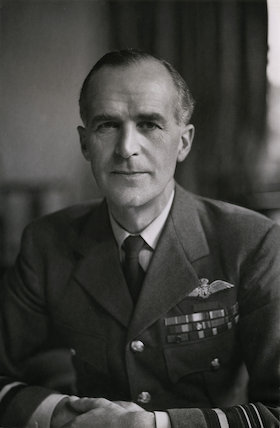Throughout history, there have been mysterious appearances, disappearances, and passages through time of individuals that seem to defy reason. Could Claire’s journey ever really happen? Will we ever see a day that passage through the space-time continuum is actually feasible? Is it possible that some have already managed to sneak through it? Are there occurrences we just don’t have good reason to support?
But back to that thin veil between our world and the other. In this world, the ceremonies of the Druids still have meaning and the veil between this world and the next is thin, especially on Samhain (pronounced in the original Gaelic as SAH-win on the show). For those unaware, this is the Celtic festival that begins at sunset on October 31 and runs through sunset on November 1, marking the end of the harvest season and the beginning of winter or the “darker half” of the year. It also begins the Celtic New Year.
Built during the First World War, the hangars and tarmac had fallen into disrepair and become a grazing area for cattle. The next day while Goddard flew over the airfield on his trip home, he passed through a terrible storm that caused his plane to spiral toward the ground. He recovered just moments before crashing. He was able to guide the plane back into the atmosphere while noticing an odd change had occurred below him at Drem Airfield. The cattle had disappeared and the airfield looked brand new. At the end of the tarmac stood four yellow aircrafts. They were surrounded by mechanics in blue overalls. Goddard took notice of this detail since RAF mechanics only ever wore brown. Goddard died in 1987, still swearing that he had somehow traveled back in time.
In a small Scottish village called Kinloch Rannoch, a hillside appears to be the head, torso, and shoulders of a man. It’s called “the sleeping giant.” The local myth claims that the giant will awaken if a specific musical instrument is played near the hill.
Not far away in the village of Woolpit, in Suffolk, England, there is a story of two children who appeared in the village in the 12th century. The children, a brother and a sister, had bright green skin, spoke an unknown language, and would only eat beans. They eventually learned to eat other foods and lost their green color. The boy became sick and died shortly after being baptized. The girl adjusted to life, though she was known as “rather loose and wanton in her conduct.” After learning to speak English, she told the villagers that she and her brother had come from St. Martin’s Land, an underground world inhabited by green people. There remains a depiction of the children on the sign at the entrance to the village to this day.
If everything in the world can be explained, then what adventure is there left for us? When I saw Claire pass through those stones, I asked myself where I would go if given a choice to travel to another time. What era would suit me the way the 1740s suit Claire? I don’t always know where I best fit in the world, but I know the places I feel most at home are those where we can ask questions about who we are, where we come from, and what wonder still lies out there undiscovered.
?










Fascinating article, John! I love hearing a fresh perspective on the show from a non-reader. In a way, I wish I could experience it fresh. The time travel element in this particular series is one of the more complex and intriguing ones that I've read, so I'm excited to see things unfold onscreen. I'm not sure where I would go in time. Maybe Elizabethan England. I'd stalk Shakespeare and pick his brain.
nice article John. A great perspective. I think I would really liked to have travelled back to time when Charles Darwin lived and to have learned all he learnt on his travels
Really enjoyed this! Love the idea that it could happen. All kinds of strange things occur that no one has explanations for. Love the articles on this blog. Keep them coming!
One of the reasons I love Outlander (the show and the books) so much is because I actually do feel like I've been transported to another time! The best stories are the ones that can take me away from reality. Love the article!
Wonderfully introspective article particularly your observation at the final about "revealing parts of us we forget…" I loved that. Exactly how I felt. Something strongly resonated with me about this time period and the idea of travel. The simplicity in a way of a life of community, living off the land – non-materialistic. Thanks for this enlightening article. Very enjoyable read.
Had to giggle at a non-British author's statement that a Suffolk village is "not far away" from a Scottish one!! Suppose distances are relative in a place as huge as America?